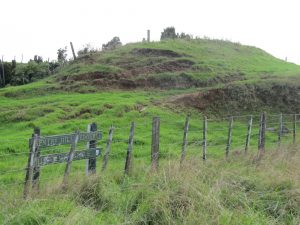Maori opinion on such an issue as Māori nationhood was quite divergent.
Maori were always conscious of historical issues, politics and the Treaty. Despite the high rhetoric of the 1990 commemoration – ‘a year to remember, to reflect and to look ahead to a new horizon’ – a harsh reality remained for Maori; that little progress was possible unless a difficult set of political Treaty issues was confronted.
Erihapeti Rehu Murchie believed that the promise of the Treaty was in everything she saw, as she was growing up. This included the ‘small box-like two-roomed cottage I was brought up in from the age of six. Cooking was on an open fire and drinking water had to be carried from a spring on the other side of the Awarua Stream.’ However, 1990 was not only about her. The Sesquentenary was about acknowledging the greater ‘cumulative circumstances of the past.’
This involved the Treaty, but it also included the acknowledging of longstanding and timeless connections between whanau, hapū and iwi. Such connections provided customary points of similarity between all Maori, with tikanga and Kawa nonetheless diverging from one region to another.
However, customary knowledge, which underpinned all Maori societies, had long predated Pakeha and the Treaty. ‘Maori nationhood’ did not arise from the Treaty.
Nonetheless, to a significant degree, the Treaty of Waitangi had provided Maori (and Pakeha) with an important marker from which a sense of ‘New Zealand nationhood’ had arisen over time, since 1840. However, the sense of nationhood that progressed beyond 1900 was one almost entirely constructed by Pakeha.
Maori had contributed to that process but had exercised little influence in shaping its ultimate form. For Maori, however, the issue went further. Concepts of ‘nationhood’ were essentially grounded in local and regional tribal entities; its essential tribal structure and form bore little resemblance to later constructions of ‘nation’ as a single political entity, as envisaged by new settlers.
When the British Colonial Office made reference to an ‘independent Maori nation’ in 1840, it had in mind a national collective of Maori that did not effectively exist. Therefore, referring to Maori as ‘New Zealanders’ in recognition of their native-born origins created problems by reducing complexity to a common identity. This name for Maori persisted until the 1870s when British migrants began to value and promote themselves as ‘native born’, at which time the term ‘New Zealander’ came to represent white Europeans, not Maori.
Throughout the intervening years to 1990, Maori remained more than a single national group within Aotearoa, though their struggles with the Crown privileged this collective identity of ‘Maori.’ As Erihapeti Rehu Murchie was arguing, Maori always saw themselves as defined by individual iwi identity and cultural nuance, with origins and a diversity that were deeply historical.
Despite these millennial origins, however, Robert Mahuta saw the 1990 commemorations in simple terms; as an opportunity to progress restitution for Maori. ‘For our tupuna,’ he wrote, ‘the Treaty was a partnership willingly entered into by Maori tribes and the immigrant minority.’
At the time, Maori were in control of their resources and saw advantage in establishing an ongoing relationship with the Pakeha. Since 1840, however, the minority partner had assumed dominance. Maori found that they were ‘destined to become paupers in their own homelands.’
Pauline Kingi agreed but looked beyond Maori-Crown as distinct opposites. Full redress for past injustices, she said, would never happen, and this was accepted by all parties. Instead, she said, the future of New Zealand lay in discovering ‘realistic solutions and compromises’ that both Maori and Pakeha could live with. ‘It is only when European and Maori can converge their thinking that somewhere in the middle zone lies the key to our future.’
The key was an agreed position of power-sharing that recognised the rights of Maori,’ as reflected in ‘all their tribal diversity.’
Winston Peters, appointed new Minister of Maori Affairs in December 1990, said much the same; ‘it’s about power sharing,’ he said, ‘not from the bottom but at the top where real decisions on resources and their use are made.’ His aim was to work ‘in co-operation with our people, to address and turn around a catalogue of failure.’ Peters promised to bring an end to ‘mediocrity and being second class in our own country,’ though at the time, he was light on specifics.





